TRADITIONAL CONSUMER BEHAVIOR MODELS
Traditional consumer behavior models have been developed over the years to understand and explain consumer decision-making processes. Here are a few notable traditional consumer behavior models:
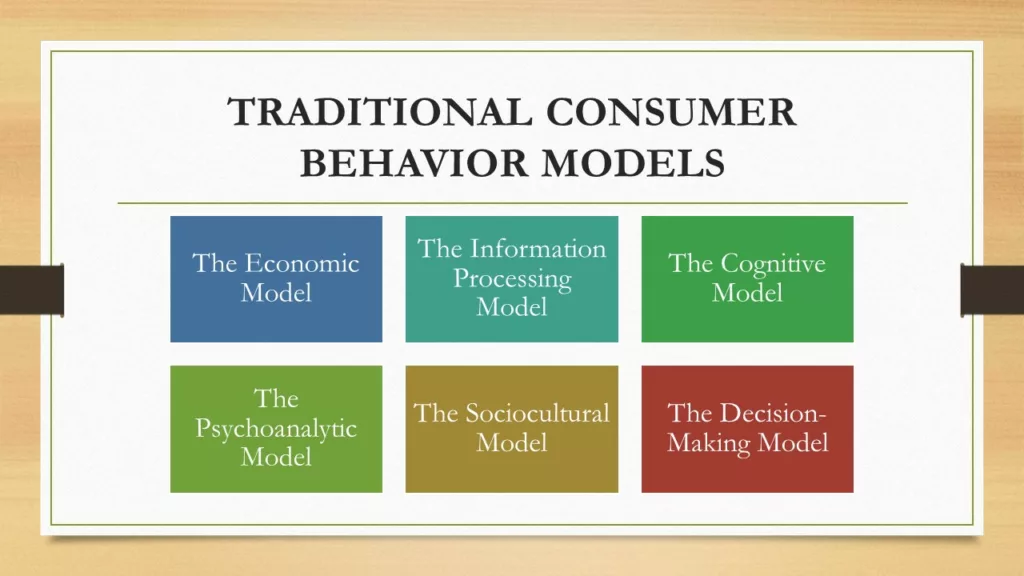
The Economic Model:
The economic model, also known as the rational model or the utility theory, assumes that consumers are rational decision-makers who aim to maximize their utility or satisfaction. According to this model, consumers carefully evaluate the costs and benefits of different options and make rational choices based on their preferences and budget constraints.
Key elements of the economic model include:
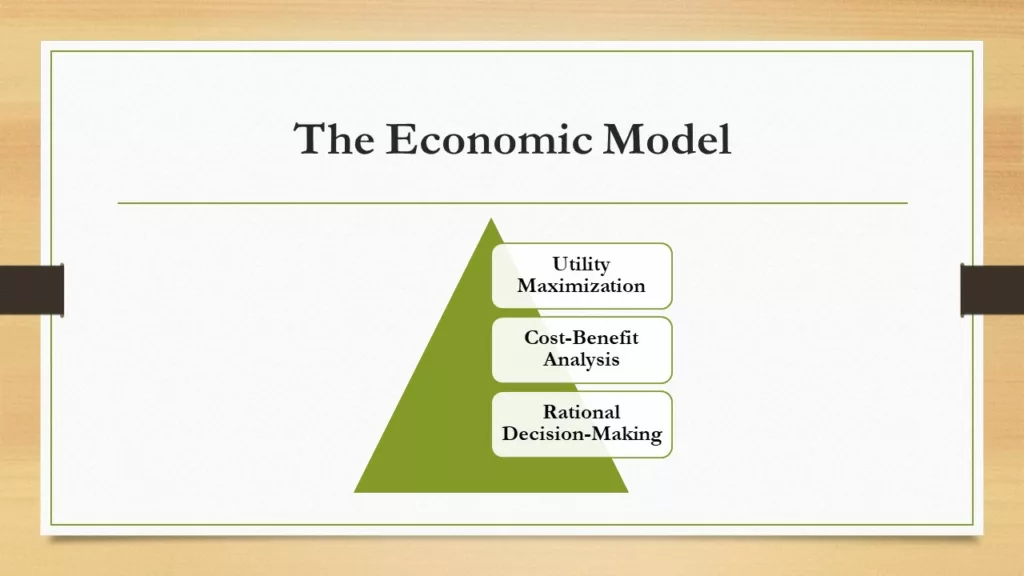
- Utility Maximization: Consumers are assumed to seek the highest level of satisfaction or utility from the products or services they consume. They consider the perceived benefits, features, and quality of a product and weigh them against the price or cost.
- Cost-Benefit Analysis: Consumers engage in a cost-benefit analysis by comparing the monetary and non-monetary costs associated with a purchase to the perceived benefits they expect to derive from it. The goal is to choose options that offer the greatest benefits relative to the costs.
- Rational Decision-Making: The economic model assumes that consumers possess complete information, have well-defined preferences, and make logical choices based on a clear understanding of their needs and available options.
However, it’s important to note that the economic model has been criticized for oversimplifying consumer behavior by assuming perfect rationality and overlooking the influence of psychological and social factors.
The Information Processing Model:
The information processing model focuses on how consumers gather, process, and use information to make decisions. It suggests that consumers go through several stages of information processing in their decision-making process:
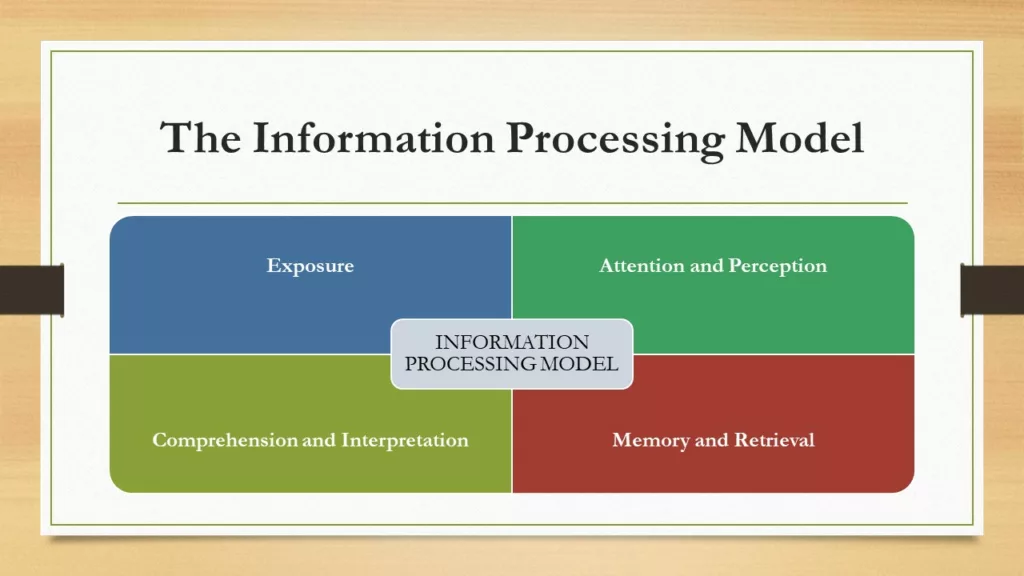
- Exposure: Consumers are exposed to various marketing stimuli, such as advertisements, product displays, or recommendations, through different channels such as TV, radio, print media, or the internet.
- Attention and Perception: Consumers selectively attend to certain stimuli based on their interests, needs, and relevance. They perceive and interpret the information received, forming subjective perceptions of brands, products, or services.
- Comprehension and Interpretation: Consumers engage in cognitive processes to understand and interpret the information they have received. They assign meaning and relevance to the information and integrate it with their existing knowledge and beliefs.
- Memory and Retrieval: Consumers store the information in memory and retrieve it when needed. Memory plays a crucial role in influencing consumer choices and preferences as consumers rely on past experiences, knowledge, and brand associations.
The information processing model highlights the role of advertising, promotion, and marketing communication in influencing consumer behavior by shaping the information that consumers receive and process.
The Cognitive Model:
The cognitive model emphasizes the psychological aspects of consumer behavior. It suggests that consumers engage in cognitive processes such as problem-solving, decision-making, and evaluation to arrive at choices that align with their needs and preferences.
Key elements of the cognitive model include:
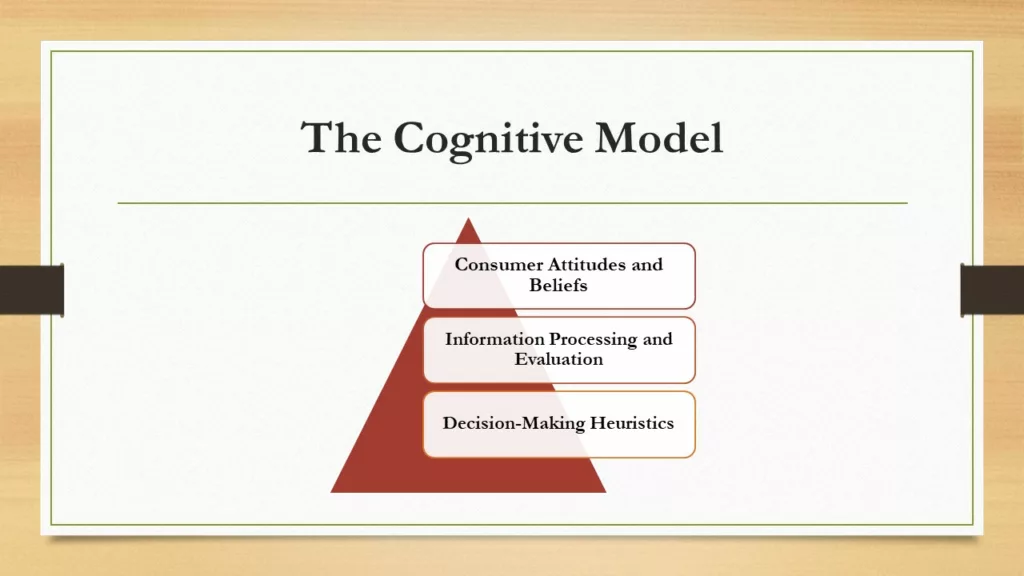
- Consumer Attitudes and Beliefs: Consumers have attitudes, beliefs, and values that influence their perceptions, preferences, and behavior. Attitudes can be positive or negative evaluations of a product or brand, while beliefs are subjective assessments of the attributes and benefits associated with a product.
- Information Processing and Evaluation: Consumers actively seek, process, and evaluate information to make informed decisions. They engage in cognitive processes such as categorizing information, forming evaluations, and making judgments based on their cognitive structures and schemas.
- Decision-Making Heuristics: Consumers often rely on mental shortcuts or heuristics to simplify the decision-making process. These heuristics include using brand reputation, price cues, or recommendations from others to make quick decisions.
The cognitive model considers factors such as perception, memory, learning, motivation, and individual differences in shaping consumer behavior.
The Psychoanalytic Model:
The psychoanalytic model, rooted in Freudian psychology, explores the unconscious motivations and desires that shape consumer behavior. It suggests that consumer choices are influenced by underlying psychological factors, including subconscious desires, needs, and emotions.
Key elements of the psychoanalytic model include:
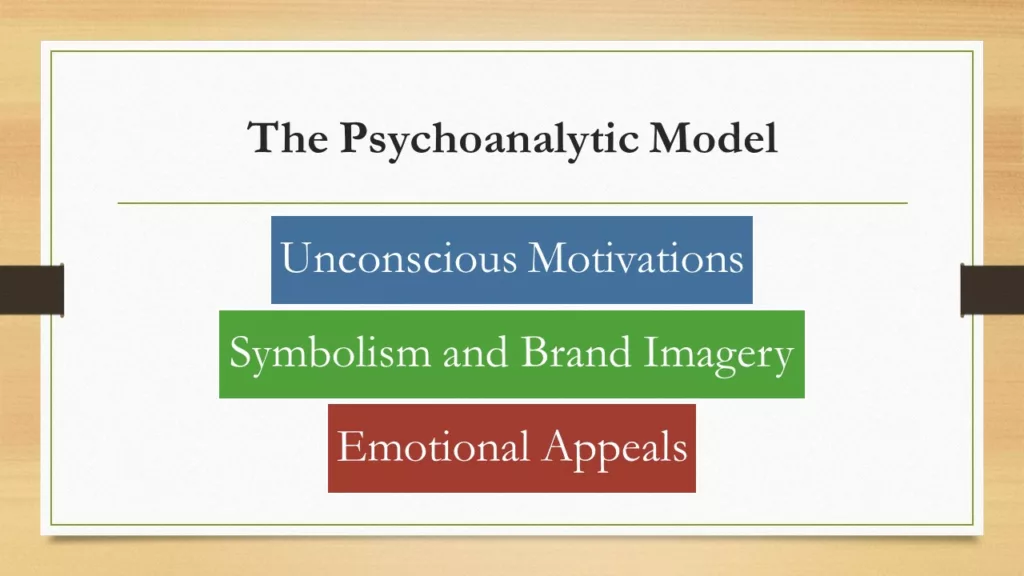
- Unconscious Motivations: The psychoanalytic model suggests that consumer behavior is driven by unconscious desires, such as the need for status, security, or self-expression. These desires often operate at a subconscious level and influence consumer choices without consumers being fully aware of them.
- Symbolism and Brand Imagery: The psychoanalytic model emphasizes the symbolic meanings attached to products and brands. Consumers may choose products or brands based on the symbolic associations they have, which help satisfy their deeper psychological needs.
- Emotional Appeals: The model highlights the role of emotional appeals in advertising and marketing. Emotions play a significant role in consumer decision-making, and marketers often use emotional triggers to create positive associations with their products or brands.
The psychoanalytic model emphasizes the importance of symbolism, brand imagery, and emotional appeals in marketing and advertising to tap into consumers’ unconscious motivations.
The Sociocultural Model:
The sociocultural model focuses on the influence of social and cultural factors on consumer behavior. It suggests that consumers are influenced by their social environment, including family, friends, reference groups, and cultural norms.
Key elements of the sociocultural model include:
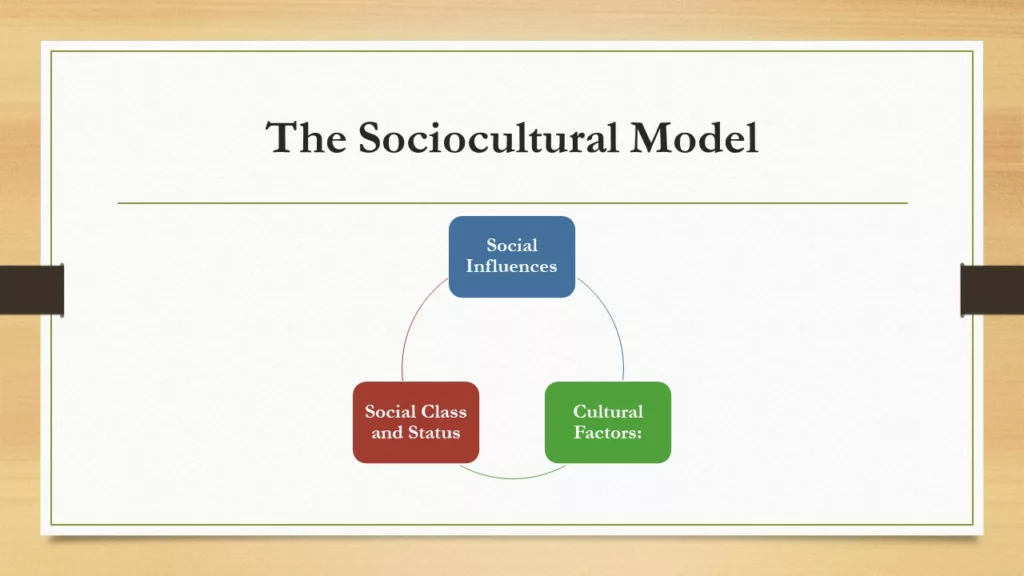
- Social Influences: The model emphasizes the impact of social interactions and social groups on consumer choices. Consumers are influenced by the opinions, recommendations, and behaviors of their reference groups, which can include family, friends, colleagues, or online communities.
- Cultural Factors: Cultural norms, values, and traditions shape consumer behavior. Cultural factors influence consumer preferences, attitudes, and consumption patterns, and marketers often adapt their strategies to align with cultural expectations.
- Social Class and Status: The sociocultural model recognizes the influence of social class and status on consumer behavior. Social class can affect purchasing power, consumption patterns, and brand preferences.
The sociocultural model highlights the importance of social interactions, social class, cultural values, and societal influences in shaping consumer choices and preferences.
The Decision-Making Model:
The decision-making model, also known as the consumer decision-making process, outlines the sequential stages that consumers go through in making purchase decisions.
Key stages of the decision-making model include:
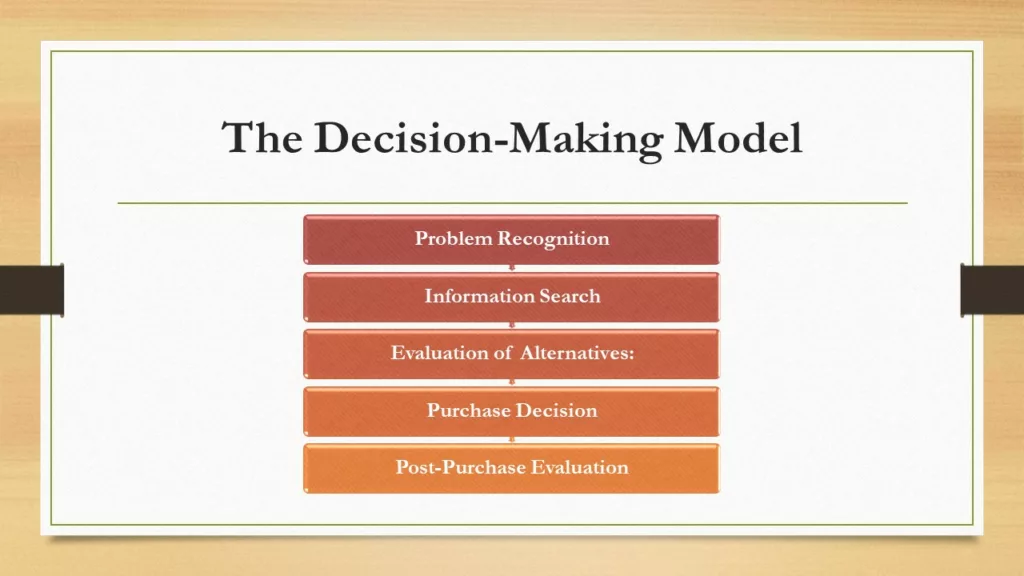
- Problem Recognition: Consumers recognize a need or problem that requires a solution, prompting them to consider a purchase.
- Information Search: Consumers gather information about potential solutions, such as product features, prices, and reviews, to make an informed decision.
- Evaluation of Alternatives: Consumers evaluate different options based on their preferences, needs, and the information they have gathered.
- Purchase Decision: Consumers make a decision to purchase a specific product or service based on their evaluation of alternatives.
- Post-Purchase Evaluation: After the purchase, consumers evaluate their satisfaction or dissatisfaction with the product or service based on their expectations and experiences.
The decision-making model highlights the importance of these sequential stages in shaping consumer behavior. It emphasizes that consumers engage in a systematic decision-making process influenced by internal and external factors.
It’s important to note that while these traditional consumer behavior models provide valuable insights, contemporary models often integrate elements from multiple models and consider newer perspectives and paradigms to capture the complexities of consumer behavior.